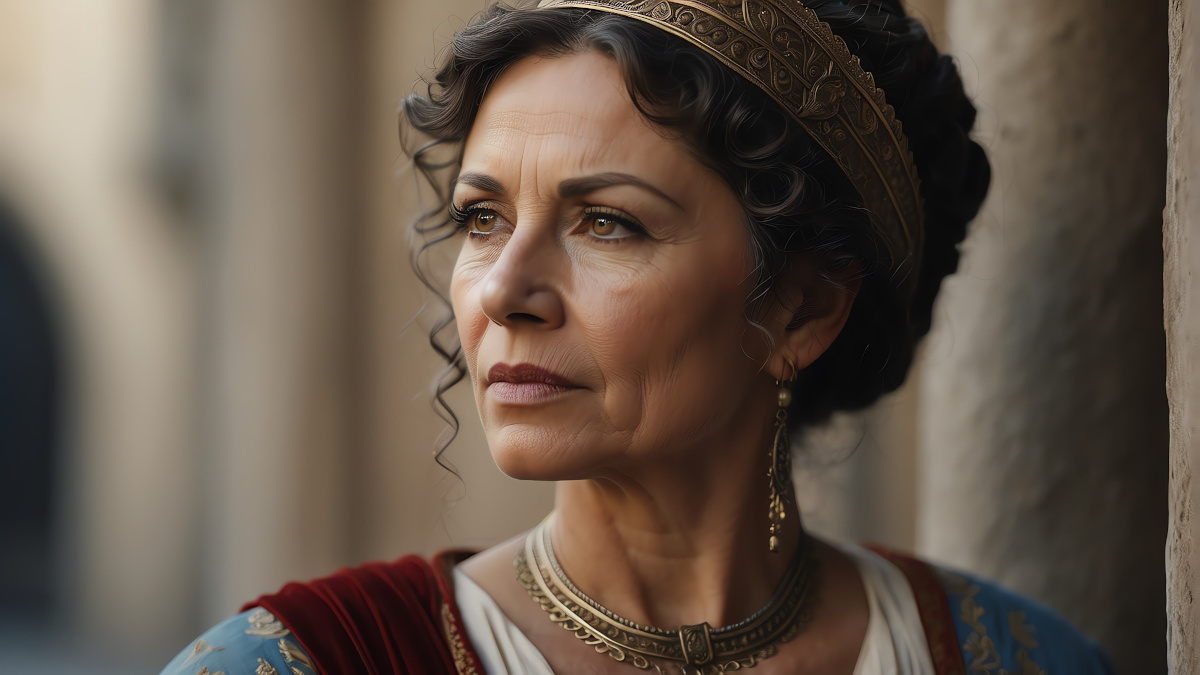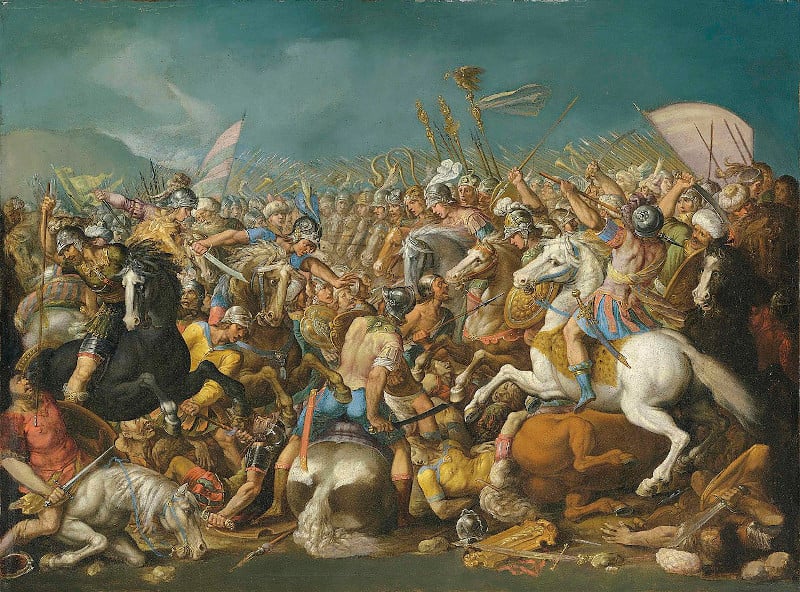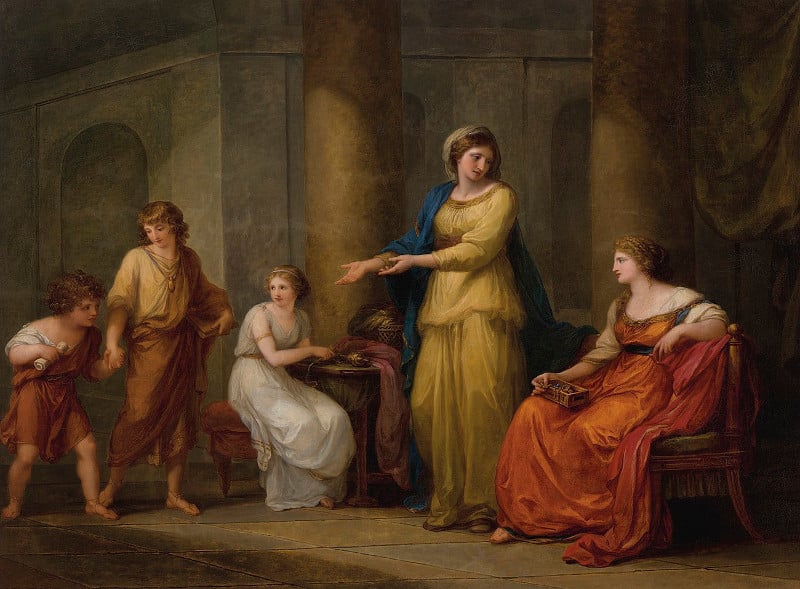
Cornelia Africana and the Stories of Ancient Roman Womanhood
One of the many celebrated paintings by Swiss painter Angelica Kauffman (1741-1807) is titled “Cornelia, Mother of the Gracchi”. Conveying the message of the importance of family above all else, the painting depicts a Roman woman and her three children. The woman, Cornelia, is portrayed as having a conversation with another Roman woman who is sitting with a box of jewelry on her lap. This woman holds up a necklace and looks at Cornelia, as if asking for her opinion. Seemingly giving her an answer, Cornelia points to her young sons on her right, indicating that they are as valuable, if not more, than her jewels. Meanwhile, Cornelia's young daughter, Sempronia, does not appear to have mastered this lesson yet as she is clearly drawn to the bright items in the woman's lap.
This painting is based on a story written by Valerius Maximus, a first-century Roman writer who compiled a collection of anecdotes in Dictorum Factorumque Memorabilium Libri IX (“Book of nine memorable deeds and sayings”). The book provides an incident from Cornelia's life where she entertained a patrician woman who flaunted her expensive jewelry. In response, Cornelia pointed to her children and said, “here are my treasures”.
- Who was Cornelia Africana and How Did She Become the Prototype of the Virtuous Roman Woman?
- The Gracchi: How Two Brothers Altered the Course of Roman Politics
The subject of the painting is Cornelia Africana, a Roman woman well-known for her devotion to her family. Widely regarded as the perfect Roman lady, Cornelia’s portrayal in Roman history is a model of Roman womanhood valued for her stoicism, domestic administrative ability, and her upholding of traditional Roman ideals. Her sons, Tiberius and Gaius Semproneus Gracchus (widely known as "the Gracchi"), went on to become significant social reformers in the Roman society.
Cornelia, Mother of the Gracchi, by Angelica Kauffmann ca. 1788. (Public Domain)
Cornelia’s Life, Family and Politics
Born around 190 BC, Cornelia was the second daughter and fourth surviving child of Publius Cornelius Scipio Africanus (c.236-c.183 BC), who is regarded as one of history's finest military leaders and strategists when he defeated Hannibal at the Battle of Zama in 202 BC. This triumph gave him the moniker "Africanus".
Cornelia's mother, Aemilia Paulla, was a respected matron from the influential Aemilii family and the sister of Lucius Aemilius Paullus Macedonicus (c. 229 - 160 BC), a general who defeated Macedon in the Third Macedonian War, earning him the nickname "Macedonicus". Along with her siblings, Cornelia was raised in an environment steeped in the traditions of Rome's elite.
Politics in Ancient Rome was already cutthroad by the time of Cornelia’s childhood, and it became much more so as time passed. Her father, Scipio, was politically attacked by Marcus Porcius Cato the elder who disapproved of Scipio's decision to make peace with Carthage on Roman terms rather than destroy it. Apart from being critical of Scipio's predisposition to support Greek culture, art, and philosophy, Cato also accused Scipio the capital crime of bribery in his interactions with Antiochus III during the struggle with the Seleucid Empire. Scipio answered this accusation with contempt, withdrawing to his home in Liternum where he died two years later.
When she was seventeen years old, Cornelia married Roman Politician, Tiberius Gracchus the Elder, a significantly older man who used his position as a tribune to save her father from prosecution. Although Cornelia gave birth to twelve children during their eighteen-year marriage, only three of them lived to adulthood. The eldest of the surviving children, Sempronia, married Publius Cornelius Scipio Aemilianus, an adopted son of Cornelia's brother Publius. The other two surviving children were Tiberius and Gaius, "The Gracchi".
A folk legend has it that Tiberius Gracchus, Cornelia's husband, discovered a male and female snakes in his bed chamber. A haruspex advised him to kill one and let the other go. If he murdered the male, he would die quickly, and if he killed the female, Cornelia would perish. To protect his wife, Tiberius decided to murder the male and he died not long after.






